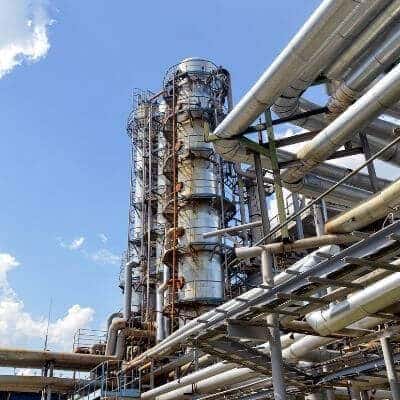Home » Occupational Hygiene » Heat Stress Assessment
Heat Stress Assessment
Heat Stress at the Workplace
HSE Australia conducts heat stress risk assessments to evaluate the risk of your employees being exposed to heat stress or thermal discomfort.
Thermal discomfort can lead to a variety of illnesses. Failure to monitor and manage thermal stress can lead to an increased risk of worker injury. A thorough thermal assessment, including a heat map, is advisable to mitigate risks.
Contact us to arrange a thermal assessment of your workplace.
Our services include:
Our Occupational Hygiene Specialists take temperature measurements at different locations and create a comprehensive heat map of the workplace.
Heat Stress Assessments are only one part of a holistic Risk Assessment. We are happy to support you in other areas.
Ongoing or frequent monitoring of temperature both “on the person” and “of the environment” will provide a more holistic heat map and information heat sequences.
Request a Quote
Please provide us with some details.

Heat Stress Assessment at the workplace
A workplace should be mapped and monitored to ensure exposure to extreme temperatures (hot or cold) don't result in thermal discomfort or harm. If the human body cannot maintain a core temparuture of 37 degrees Celsius, and the core temaprature rises above or far below that level, workers will experience physioligical and psychological stress. This is called Thermal Discomfort or Heat Stress.
HSE Australia conducts a comprehensive workplace thermal stress assessment to determine the risk of thermal-related illness. Assessments vary across industies and workplaces.
Some of the key risk factors we assess include:
- type of work undertaken — manual, labour-intensive work, or passive work such as driving a forklift
- workload intensity and duration
- workplace setting and processes — Is work predominantly inside or outside? Is there an appropriate shift schedule when working in extreme temperatures?
- workplace air temperature
- humidity levels in the workplace — high humidity limits the evaporation of sweat which is the body's critical cooling mechanism
- radiant heat — from the sun or other sources such as furnaces, ovens and hot vessels
- air movement or wind speed, operation of appropriate ventilation systems (LEVS)
- physical fitness of the worker, including acclimatisation and any pre-existing conditions such as obesity, heart or circulatory diseases, skin diseases or use of certain medicines that affect the body's ability to manage extreme temperatures
- work clothing — including protective clothing, e.g., PPE that may restrict airflow and reduce sweat evaporation, or unsuitable clothing for cold environments.
Our highly trained and qualified occupational hygienists will assess personal and environmental factors in your workplace and provide recommendations to ensure your organisation meets occupational health and safety obligations. We can also help you develop a comprehensive thermal-comfort checklist for ongoing self-monitoring of your work environment.
Read the Article:
Why a Heat Stress Assessment should be part of your Risk Assessment Process.
Our Occupational Hygiene team around Dr. Michael Tkaczuk has put together a comprehensive article about Themal Discomfort Audit as part of your Risk Assessment Process. Please have a look and if you are concerned about extensive heat at your workplace please contact us.
Heat Stress & Thermal Discomfort Assessment
HSE Australia offers a wide range of Occupational Hygiene and Risk Management Services in the area of Thermal Discomfort Assessment (Heat Stress) . Contact us for an individual quote.
Request a call back
Solving problems others find difficult...for clients in

Frequently asked Questions
Health Safety Environment Australia
What is heat stress in the workplace?
The human body tries to maintain a core body temperature of 37°C. If the body temperature increases past this level, people can experience psychological and physiological stress. This is called heat stress or thermal discomfort. Extreme heat is dangerous to workers' health and can prove fatal if left unmanaged. Even when employees are provided with the correct clothing, trained, and provided adequate breaks in climatised rooms, prolonged exposure can have long-term effects.
Immediate effects of heat stress include:
- lack of concentration
- clumsiness, dizziness or lightheaded
- muscle weakness and cramps
- exhaustion
- vomiting or nausea
- pale, clammy skin
- rapid, shallow breathing and pulse
- heat rashes.
Prolonged exposure can result in heat stroke and can worsen pre-existing medical conditions such as heart disease and high blood pressure.
Sources of heat stress in a workplace.
Typical sources of heat stress in a workplace include:
- radiating heat from machinery
- geothermal radiation (mining)
- exposure to extreme weather conditions
- physically demanding work
- body heat trapped by wearing PPE
What is cold stress in the workplace?
As with extreme heat, extremely cold temperatures at work are dangerous to workers' health and can be fatal.
Immediate effects of cold stress include:
- numbness and shivering
- red skin
- lack of coordination
- fatigue
- blue skin
- slow pulse and breathing
Prolonged exposure can result in hypothermia, frostbite injury or chilblains
Sources of cold stress in a workplace.
Typical sources of cold stress in a workplace include:
- prolonged work in cool storage rooms
- exposure to extreme weather conditions
- incorrect clothing when working in cold environments
How can a business reduce thermal stress for workers?
Businesses can reduce the risk of harm from extreme temperatures by:
- assessing the work site for risks of thermal stress before work starts
- identifying if a worker is fit to work in thermally challenging conditions and work environments
- establishing a heat/cold illness prevention program
- providing education and training for workers to be made aware of the risks of thermal stress occurring during their day-to-day work
- allowing workers to acclimatise to their work area or environment
- reducing exposure by allowing plenty of breaks and rotating staff
- supplying appropriate clothing for the work environment and easy access to cold water or heated drinks
One Source Many Solutions
Over the past 15 years we developed the ability to quickly understand and respond to our clients’ needs. We are “solving problems others find difficult…”.
We offer our clients an enviable team of specialists working with associates and other external experts, driving and delivering fit for purpose, tailored single sourced solutions for you.








